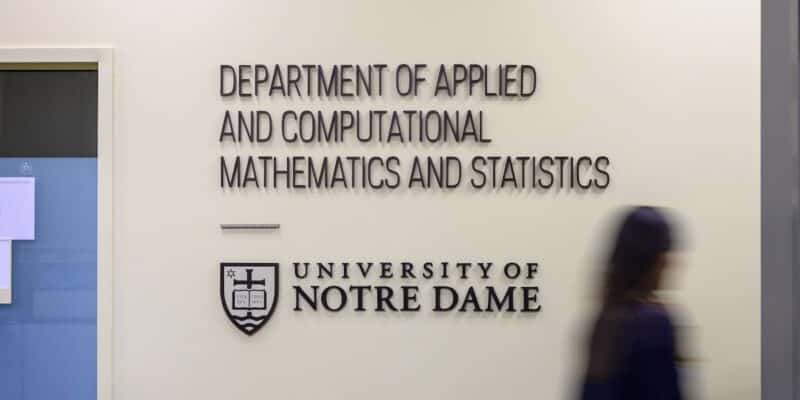Reflections on Translating a Career in Industry to the College Classroom

The Kaneb Center Course Design Academy was invaluable to me as I developed the courses necessary for a new actuarial science concentration for the Applied and Computational Mathematics and Statistics (ACMS) master’s program. As someone who joined academia after a long career in industry, I wasn’t aware of the advancements in teaching approaches that have been developed since I graduated from university, and the course design academy was a real eye-opener for me.
I knew that I wanted the actuarial concentration to have a large experiential component, where students would have the opportunity to learn firsthand about the kind of work that actuaries do. One of the courses I created is an actuarial modeling course, which brings together mathematical concepts, business acumen, and computer-based modeling tools in a way that the foundational concepts are applied in hands-on modeling projects. This is a lot to squeeze into a course, and it was challenging to figure out a way to include all of these pieces in a lecture-based setting.
One of the first things we learned about course design was the importance of designing a course with the end in mind and structuring the course with an idea of how you want the students to be different after taking the course. This was a refreshing approach compared to the one I had been taking. I had clumsily identified a vast set of material I wanted to cover in the class, and was trying to figure out how I was going to squeeze it all into the semester. Being introduced to this perspective really had an impact on my approach and helped me corral my curriculum into something that was more focused on outcomes.
Once I had reorganized the materials that I planned to include in the course, I still needed to determine how best to teach it. I had a mix of fundamental theory and hands-on modeling work that I wanted to introduce in an effective way. It was challenging to organize it effectively, until I learned about various hybrid learning approaches. This gave me a new lens to see different ways of structuring the students’ time during the semester, and I now saw that there were some things in my course which would be more effective in-person during class and some aspects that were better for the students to do on their own outside of class.
For this course, the hands-on modeling work was well-suited for the classroom where we could all work interactively building the models, testing the outcomes, and discussing the business aspects of the results. The foundational mathematics topics could then be handled so that the first exposure was outside of class via video lessons. This had the advantage that students could master this material on their own schedule and at their own pace. Then the class time could be focused on reinforcing the main points, clarifying any topics the students had questions on, and applying the concepts in real-world examples.
This hybrid approach provides the best of both worlds to the students, and they’ll be able to gain important insights into the world of actuarial science that would be impossible to grasp through a lecture-only approach to the course. Ultimately, I expect the students will now walk away from the class with an understanding of the foundational math skills required to be an actuary and a set of tangible skills that can be applied immediately in their work.
Shane Leib is an assistant teaching professor in the University of Notre Dame’s Department of Applied and Computational Mathematics and Statistics.